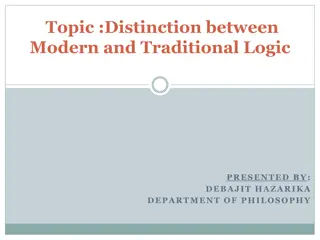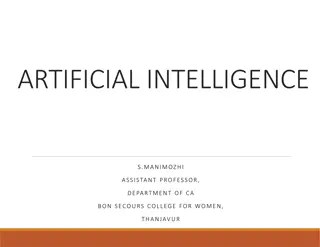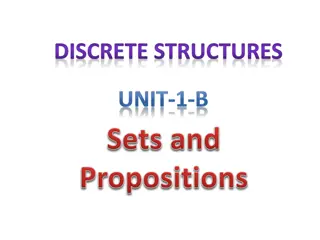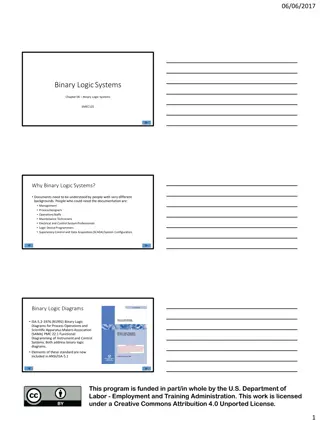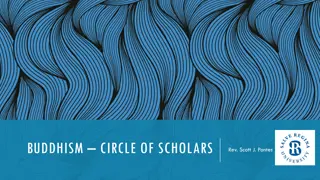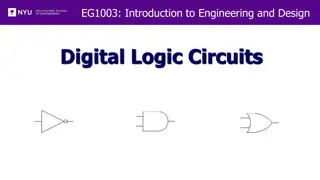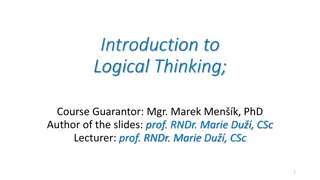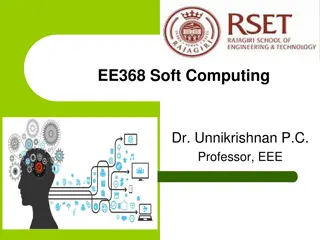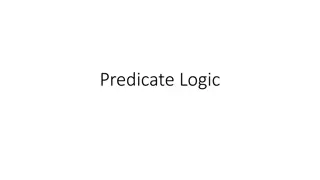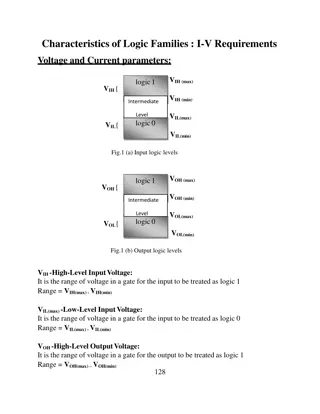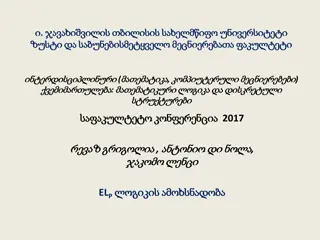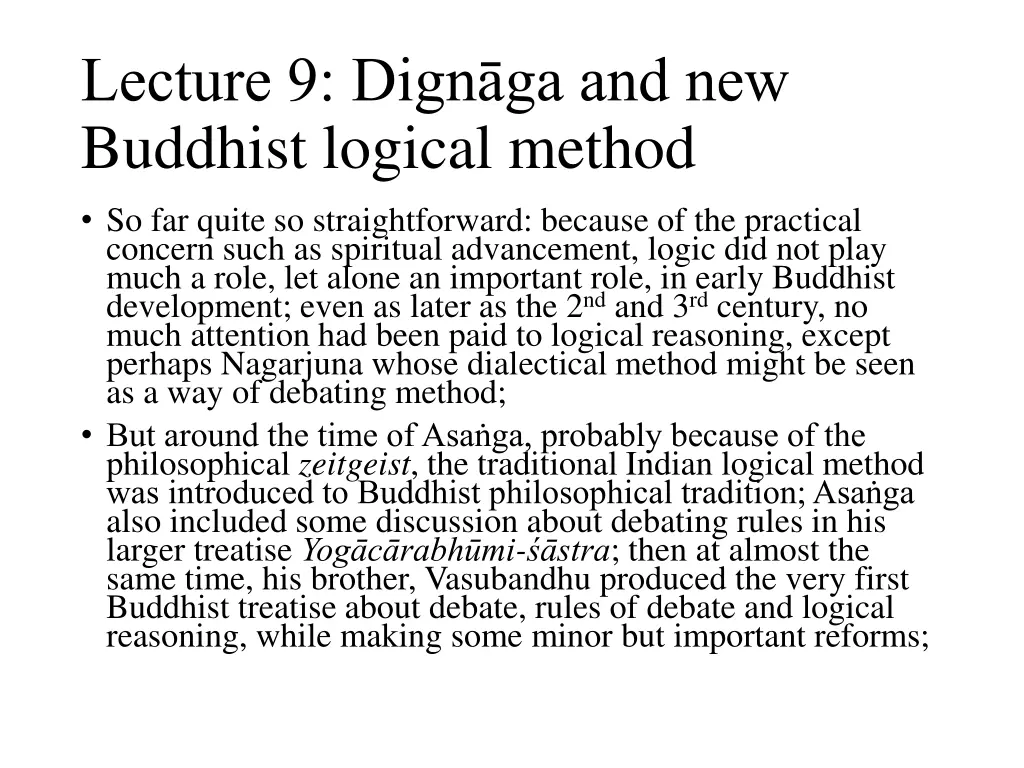
Buddhist Logical Innovation: Dignāga's Reformative Contributions
Explore Dignāga's pivotal role in reforming Buddhist logical reasoning methods, shifting towards a 3-membered logical approach and shaping the trajectory of Buddhist philosophical tradition.
Download Presentation

Please find below an Image/Link to download the presentation.
The content on the website is provided AS IS for your information and personal use only. It may not be sold, licensed, or shared on other websites without obtaining consent from the author. If you encounter any issues during the download, it is possible that the publisher has removed the file from their server.
You are allowed to download the files provided on this website for personal or commercial use, subject to the condition that they are used lawfully. All files are the property of their respective owners.
The content on the website is provided AS IS for your information and personal use only. It may not be sold, licensed, or shared on other websites without obtaining consent from the author.
E N D
Presentation Transcript
Lecture 9: Dignga and new Buddhist logical method So far quite so straightforward: because of the practical concern such as spiritual advancement, logic did not play much a role, let alone an important role, in early Buddhist development; even as later as the 2ndand 3rdcentury, no much attention had been paid to logical reasoning, except perhaps Nagarjuna whose dialectical method might be seen as a way of debating method; But around the time of Asa ga, probably because of the philosophical zeitgeist, the traditional Indian logical method was introduced to Buddhist philosophical tradition; Asa ga also included some discussion about debating rules in his larger treatise Yog c rabh mi- stra; then at almost the same time, his brother, Vasubandhu produced the very first Buddhist treatise about debate, rules of debate and logical reasoning, while making some minor but important reforms;
Dignga and his importance As we discussed in the previous slide, despite all the foundations and reforms, Buddhist logical reasoning method had been revolved around the traditional method during the first stage of its development; when Dign ga started to reform the traditional method, however, the outcome was of paramount importance and historical significance; First of all, he made the rule that as a logical method/sequent, it should consist of 3 members only; secondly, also as a rule, there must be a 3fold characteristic for the second member hetu/reason, which is called trair pya; thirdly, invariable concomitance or more precisely, the rule of pervasion vy pti must be observed; and fourthly, he discussed in detail about the 9 possibilities about the reason/examples and their relationship; in the ensuing lectures, we shall discuss those reforms and innovations of Dign ga one by one;
3-membered logical method More often then not, because of the important role played by Dign ga in Buddhist logical method, it is almost universally known that after Dign ga and with the reformed new-hetuvidya or new logical reasoning method, the 3-membered logical method came into existence; As we pointed out repeatedly, there is no doubt that by the time of Dign ga, not only the term hetuvidya (before that, Nyaya was used) was used more often in Buddhist tradition; but more apparently, the 3- membered method virtually replaced the 5-membered method, which had been used up until the time of Vasubandhu; But as we also mentioned, it might be more precisely to note that at least in one of the earliest Buddhist treatise of logical/debating rules, which compiled by Vasubandhu himself, the last 2 members were quietly dropped; moreover, we might remember that Dign ga was a pupil of Vasubandhu; so it might be plausible, as we have suggested, that Vasubandhu and his insights served as springboard for his pupil s great innovation that followed shortly afterwards;
From 5 to 3 members: as we repeatedly mentioned, the traditional 5-membered logical method was invented by the ancient Indian philosophers and it was only introduced to Buddhist philosophical tradition around the time of Asa ga; at the same time, the last two members were dropped by Vasubandhu, probably because they were redundant; but by the time of his pupil Dign ga, the 3-membered method was not only fixed by also markedly refined; Introduction to Buddhist tradition From 5 to 3 members 5-membered The 5-membered logical method was introduced to Buddhist tradition by Asa ga 2 members were dropped by Vasubandhu and 3- membered method was fixed by Dign ga This method was invented by the traditional Indian philosophers Asa ga-transition period Vasubandhu and his pupil Dign ga Ny ya philosophers
Buddhist logical sequent/structure after Dign ga: 3-membered sequent As we have mentioned, after Dign ga, Buddhist logical method was known as new-hetuvidya or new method; one of the reasons is that from that time onwards, only three members are used to construct a logical sequent or method: thesis, reason and examples; But two other terms may be also mentioned here: Pak a: this term means subject but in Buddhist logic, sometimes it is used to indicate the entire thesis (please see detailed discussion in the lecture notes); Li ga: this term means sign or mark, and should be understood with the middle term/2ndmember reason/hetu; for example, because of the sign/mark of smoke, we may be able to infer fire in the vicinity; here, mark or sign of smoke is the reason of our inference for the possibility of a fire;
3-membered logical method: please notice that in the diagram below, all the relevant terms are listed together; however, when you try to understand the particular meaning of the term, always remember the context of the situation; for example, reason and mark/sign are generally clear enough, although when using the example such as the logical sequent sound, produced and impermanent, you may understand produced-ness as reason rather than mark/sign for the sake of clarity; of course, you can understand produce-ness as a sign/mark of its characteristic of being conditioned; Reason: both terms are used Sapak a/supporting example Vipak a/exclusion example Pratij /thesis Pak a/subject of the thesis or the entire thesis Hetu/reason Li ga/sign or mark, i.e. smoke is sign of fire; produced-ness is a sign of conditioned Thesis: both terms are used Examples
Example-1a: the classical examples we are going to use are two kinds and below is the example of inferring fire from smoke; in this example, the inference is to prove the existence of one thing in a place is also a sign or the reason of the existence of another thing; please notice that in the example below, we use pratij as thesis; this means that the whole sentence there is a fire on the mountain, is the thesis; Thesis/pratij Reason/sign/mark Examples Mountain possesses fire/there is a fire in the mountain Reason: smoke Sign/mark: smoke Sapak a: kitchen Vipak a: lake
Example-2: below is the other classical example that are used in traditional and Buddhist logical method; here, the inference is to prove that two things are sharing one same property; for instance, sound is impermanent, just like everything that is produced, which is also impermanent; in other words, sound and all the things that are produced share the property of impermanence; Thesis/pratij Sound is impermanent Reason/sign/mark Reason: because it is produced Sign/mark: produced-ness/conditioned Example Sapak a: a pot Vipak a: sky
Example 1b: below we are going explain the classical example 1a: fire and smoke; but this time we shall use the term pak a/subject instead of pratij /thesis; by using this term, I hope you will understand the subtle difference between those two terms; as you can see, if the term pak a is used, it simply states the subject, that is mountain, and the fire that is taking place in the mountain, or the fact of it possessing a fire, is unstated; * mountain is on fire does not mean the mountain itself is burning but there is a fire burning somewhere in the mountain; Example Sapak a: kitchen Vipak a: lake Reason/sign Reason: smoke Sign/mark: smoke Pak a/subject Mountain possess fire or *Mountain is on fire
Example 2b: we shall also try to explain example 2a by using the term pak a/subject instead of pratij /thesis; because here pak a means subject, which is sound, its being impermanent is the property of it or sometimes called s dhyadharma (the property of inferential sign or reason) is unstated but included; in other words, in the example below, pak a includes the subject sound and its property of being impermanent; Pak a/subject Reason/sign Examples Sound and its impermanent nature Reason: produced Sign/mark: produced- ness/conditioned Sapak a: like a pot, which is produced Vipak a: unlike the sky, which is not produced (according to Buddhist doctrine)
4 elements of Buddhist logic: as we mentioned, Dignga not only reformed Buddhist logical method, but he also refined it by clarifying some of the terms and their relationship. So according to Richard Chi (Chi, 19884:xliv), in 3-membered Buddhist logical method, there are actually 4 necessary elements. Please see the explanations below: Trair pya of the hetu/reason or li ga/sign/mark; Property of the subject (invariable concomitance; pak a must fall completely within the hetu) Forward pervasion (presence; sapak a must occur partially or completely within the hetu) Counter-pervasion (absence; vipak a must be completely outside of the reason or hetu or absent from it) You may have noticed the above two new terms we have mentioned earlier: sapak a and vipak a; by now you may already understand these two terms, which sapak a means a corroborative example to support the reason/sign/mark and vipak a means reverse example, which excludes the possibility;
4 elements: as you can see, all the 4 elements of the Buddhist logical method have already been discussed by now. Nevertheless, only the invariable concomitance (similar to vy pti) has been discussed in some detail in the last few lectures while all others, such as trair pya, sapak a and vipak a have been only mentioned passim. Because all those concepts are important and somewhat difficult to explain, we have proceeded slowly during the last few lectures. We shall continue our forthcoming lectures steadily but assuredly so as to make sure you understand those most important concepts and theories of Buddhist logic. Trair pya Buddhist logic Vipak a Sapak a Vy pti
Sapaka and vipaka: before ending this lecture, we shall explain those two terms in some detail; by now you must be rather familiar with the two terms, because in a straightforward sense, they are the two examples, one is supporting inevitability of the simultaneous existence of the thesis and the reason while the other excluding such a possibility; but some more briefings on those two terms may be helpful. Before discussing the two terms, let have a look at the term pak a itself, which means the subject; so sa + pak a = sapak a = similar with the subject, while vi + pak a = vipak a = dissimilar with the subject; As a result, in a word, sapak a = a similar example with the subject, while vipak a = a counterexample with the subject; For instance: the mountain possesses fire is the subject that needs to be verified or proved; in order to prove that subject/thesis, a reason is given or a sign must be observed: that is, smoke; because (reason) if smoke is seen (sign/mark), there must be a fire. Why? Because the invariable concomitance fire and smoke occur simultaneously; Inference: invariable concomitance = fire and smoke occur together; sapak a/kitchen (fire & smoke) + vipak a/lake (neither fire nor smoke) = mountain possess fire because of smoke in a kitchen but not in a lake;
Sapaka and vipaka: below is a simple diagram to demonstrate the operational mechanism of those two examples in the 3-membered Buddhist logical sequent/method; we used the term invariable concomitance instead of v ypti because we will explain the latter term in another lecture; please note that we deliberately changed the order of the logical reasoning sequent, which the normal order would have the 2ndand 3rd members placed to the 4thand 5thspots respectively;
Summary and facts-check In this lecture, we brought all the important philosophical terms regarding Buddhist logical reasoning and explained how those terms had been used to construct the Buddhist logical method; First of all, it is important to pay attention to the fact that although Dign ga and his new Buddhist logical method perpetuated the 3- membered logical reasoning, his teacher, Vasubandhu and the important contributions made by him should be given the due credits; for example, as we mentioned, by the time of Vasubandhu, not only the last two members 4thand 5thmembers were dropped, but also the requirement of invariable concomitance was clearly stated; But it is also important to remember that Dign ga s 3-membered logical method not only made Buddhist logical concise but more precise; the refined terms and stated rules such as trair pya and vy pti at the same time very much enhanced the cogent level of Buddhist logical reasoning;
Facts-check-2 We also introduced two important new terms: sapak a/similar example and vipak a/counterexample; As you can see, those two terms are not new, for even at the time of Vasubandhu, the examples already included a similar example and a dissimilar one; but again, what Dign ga improved are simple yet remarkable. We shall discuss in detail about the two terms in a future lecture but in brief, Dign ga suggested that in order to ensure the strength of the inference, a similar example must share the same property with the subject while a dissimilar example must not share (or absent) such a property of the subject; For instance, there must be fire/smoke in a kitchen, and the must not be fire/smoke in a lake; here, the definitive stipulations of sapak a and vipak a are crucially important; we shall discuss more next time; that would be all for this week; Any questions, just let me know!
Exercises/assignment #9 Do the following exercises and submit them via email (chuanqing@bcs.edu.sg) to me by 5:00 pm, on 4th November (Wednesday); as usual, please send the exercises of the two courses (Buddhism and Economics & Introduction to Buddhist Logic) together in one Word doc. file; 1, Can you think a example to demonstrate the 3- membered Buddhist logical method; for example, there must be raining over there because the sky is shadowed by dark clouds *Do not use the classical examples we used in our lectures. 2, Who is generally thought to have refined and then introduced the theory of trair pya to the Buddhist logical method for the first time?


